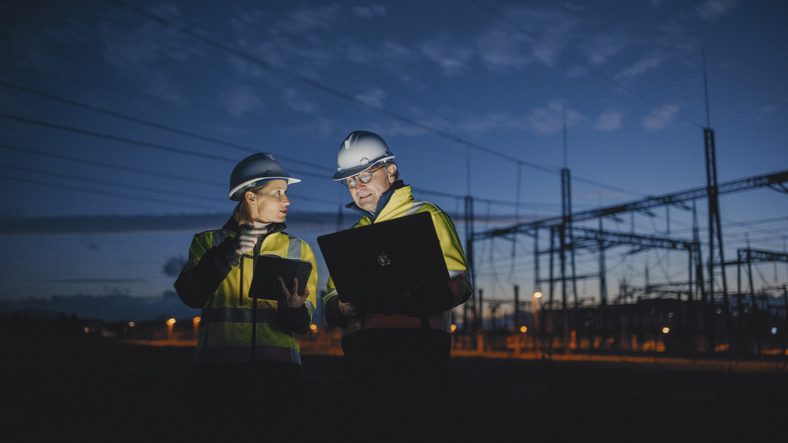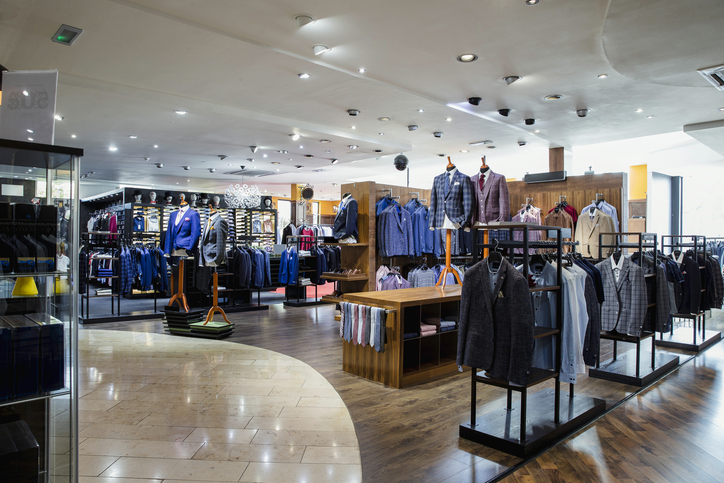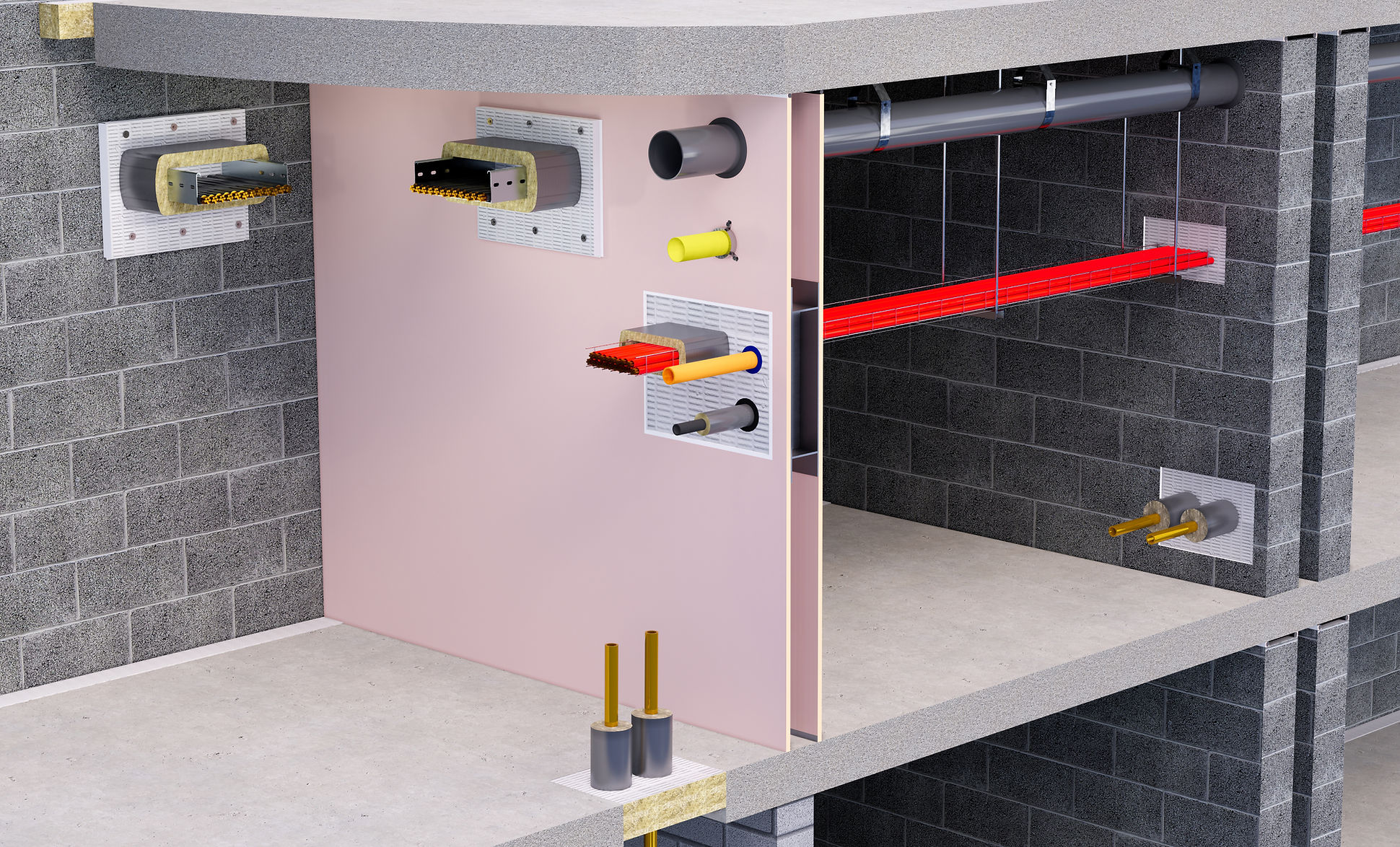
Firestopping is a passive fire protection technique that involves filling openings and joints in fire-resistant walls and floors with fire-resistant materials.
The goal of firestopping is to prevent the spread of fire, smoke, and toxic gases between compartments within a building, and to maintain the fire resistance of the walls and floors.
When is it required?
To comply with the UK’s Passive Fire Protection Laws, Firestopping is required when the integrity of a wall or floor is compromised by openings such as doors and windows, or service penetrations such as pipes, ducts, and cables. These openings can vary in size from single cables to cable bundles, cable trays, and ducts of different shapes and sizes. Gaps can also be designed into the building to accommodate structural movement.
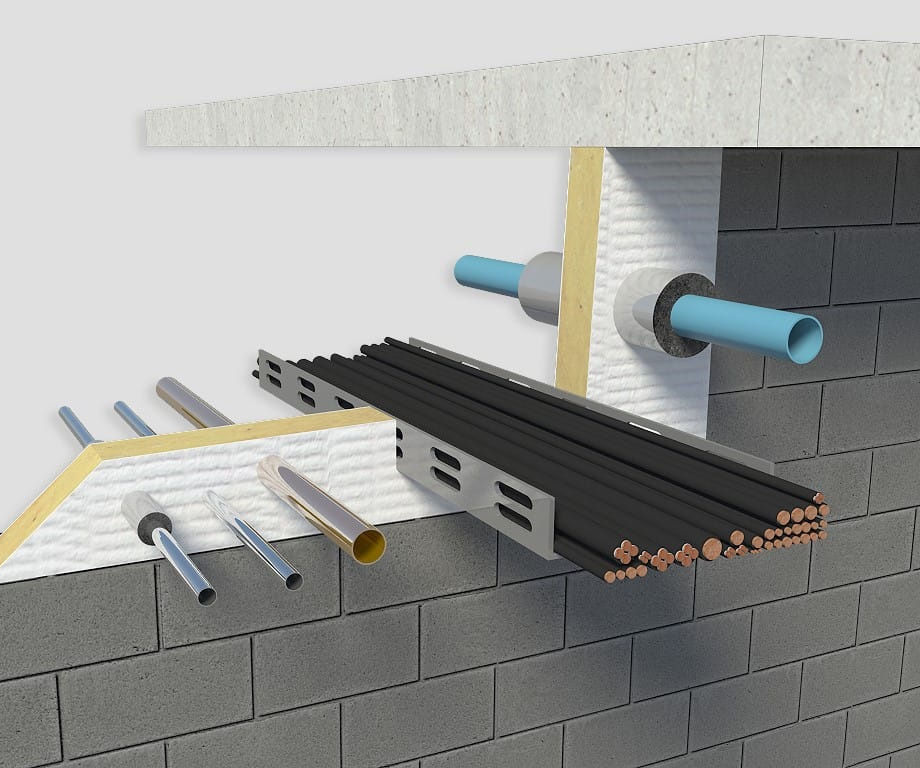
Why?
Firestopping helps prevent the spread of fire and smoke through different compartments of a building, making it an important tactic in Passive Fire Protection. Without having fire stops correctly installed, smoke and flames can quickly travel through a building, damaging the property and risking the lives of its occupants.
The Building Fire Safety Act
The Building Fire Safety Act will be fully enforced in the UK starting in October 2024, and will apply to most buildings and structures, except for private homes. Landlords and developers will be financially responsible for any non-compliance issues.
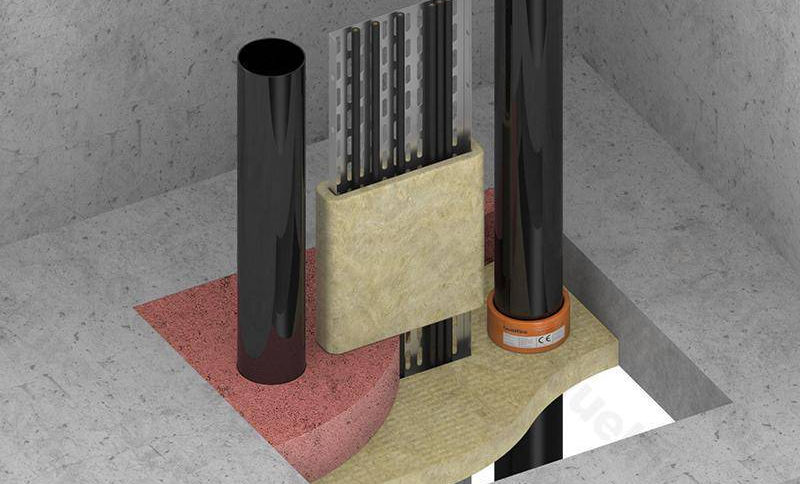
Here are some of the new regulations:
Fire safety managers
Buildings with more than seven stories will need to have a fire safety manager appointed to maintain fire stopping solutions.
Building inspectors and control approvers
These individuals will need to register to ensure compliance with the Building Safety Regulator.
Fire doors
In 2024, fire doors will need to be certified to show they can withstand fire for a minimum specified period, such as 30 minutes (FD30), 60 minutes (FD60), or up to 240 minutes (FD240).
Cavity barriers
These barriers should be sized appropriately for the cavity, tightly fitted to a rigid construction, and mechanically fixed in position.
Metal pipes
Seals for metal pipes must be flexible to allow movement. If cement is used, it must be reinforced and applied to the full depth of the wall or floor.
Fire collars
These can be fitted around the base of a pipe and attached to masonry, plasterboard, or concrete partitions to reinstate the wall’s resistance and offer up to four hours of fire resistance.

